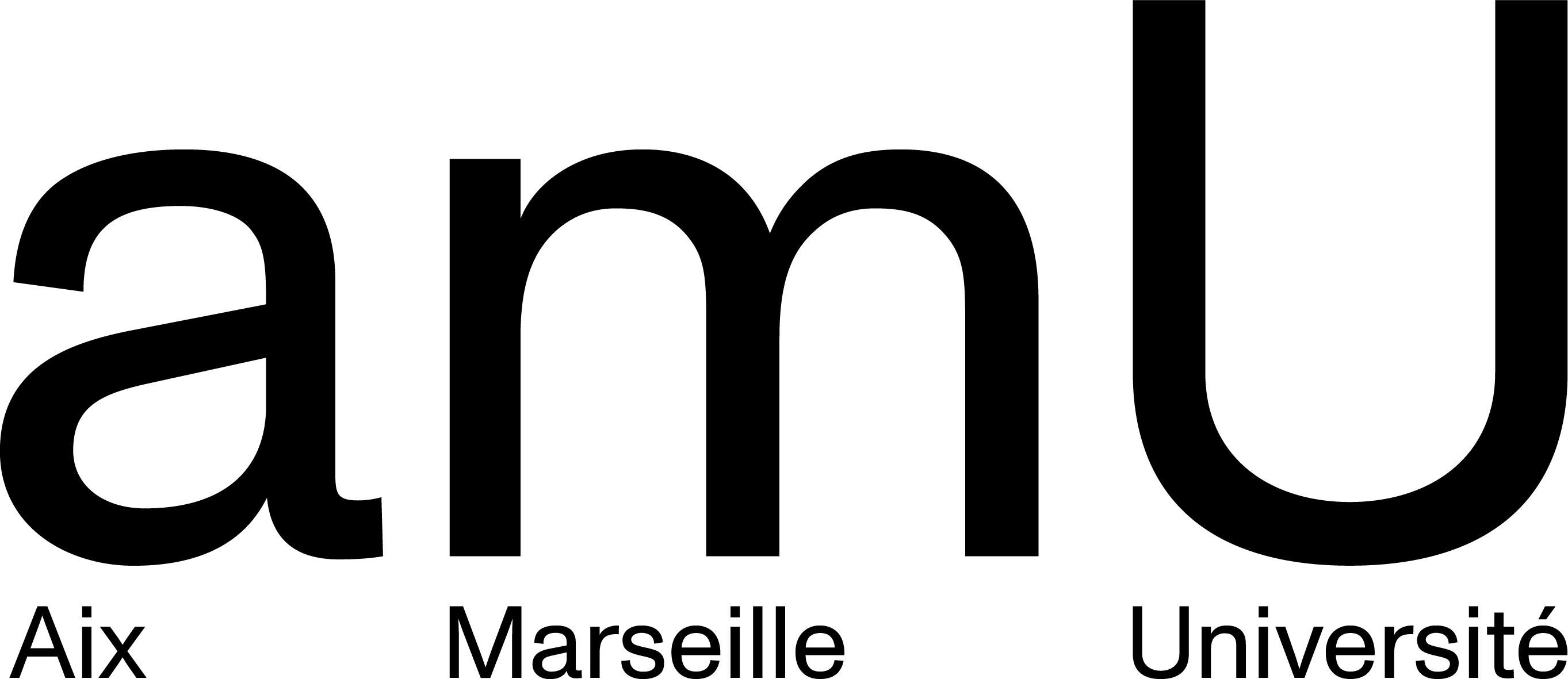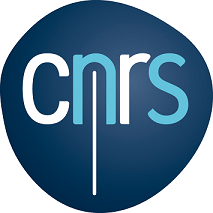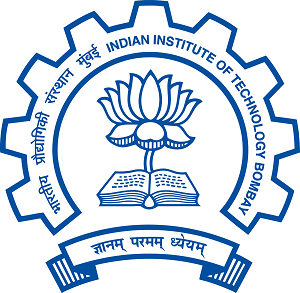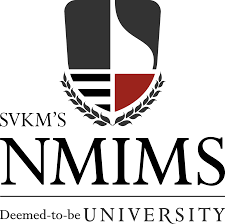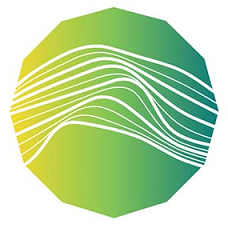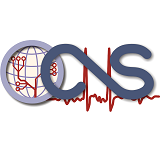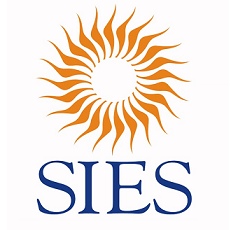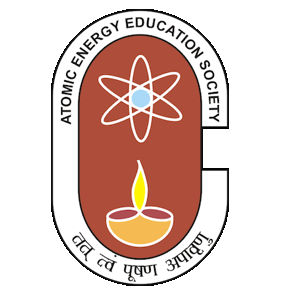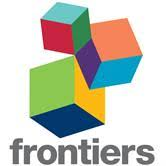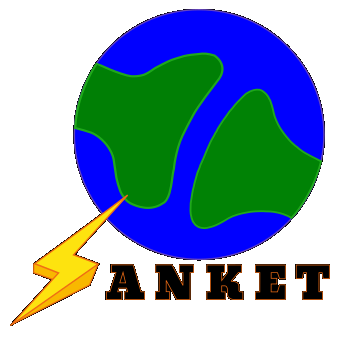
Dr. Shailesh Appukuttan
Postdoctoral Researcher @ CRMBM & INT, AMU
About Me
Publications
Ates, O., Appukuttan, S., Fragnaud, H., Fragnaud, C., & Davison, A. P. (2024). NeoViewer: Facilitating reuse of electrophysiology data through browser-based interactive visualization. SoftwareX, 26, 101710. doi: 10.1016/j.softx.2024.101710
Appukuttan, S., Bologna, L. L., Schürmann, F., Migliore, M., & Davison, A. P. (2023). EBRAINS Live Papers - Interactive resource sheets for computational studies in neuroscience. Neuroinformatics, 21(1), 101-113. doi: 10.1007/s12021-022-09598-z
Basu, K. *, Appukuttan, S. *, Manchanda, R., & Sik, A. (2023). Difference in axon diameter and myelin thickness between excitatory and inhibitory callosally projecting axons in mice.Cerebral Cortex, 33(7), 4101-4115. doi: 10.1093/cercor/bhac329 (* : joint first authors).
Davison, A. P., & Appukuttan, S., (2022). A faster way to model neuronal circuitry (using artificial neural networks). Elife, 11, e84463. doi: 10.7554/eLife.84463
Appukuttan, S., & Davison, A. P. (2022). Reproducing and quantitatively validating a biologically-constrained point-neuron model of CA1 pyramidal cells. Frontiers in Integrative Neuroscience, 16. doi: 10.3389/fnint.2022.1041423
Bologna, L. L., Smiriglia, R., Lupascu, C. A., Appukuttan, S., Davison, A., Ivaska, G., … Migliore, M. (2022). The EBRAINS Hodgkin-Huxley Neuron Builder: An Online Resource For Building Data-Driven Neuron Models. Frontiers in Neuroinformatics, 16. doi: 10.3389/fninf.2022.991609
Appukuttan, S., Brain, K. L., & Manchanda, R. (2021). Effect of Variations in Gap Junctional Coupling on the Frequency of Oscillatory Action Potentials in a Smooth Muscle Syncytium. Frontiers in Physiology, 12. doi: 10.3389/fphys.2021.655225
Sáray, S., Rössert, C. A., Appukuttan, S., Migliore, R., Vitale, P., Lupascu, C. A., ... & Káli, S. (2021). HippoUnit: A software tool for the automated testing and systematic comparison of detailed models of hippocampal neurons based on electrophysiological data. PLoS computational biology, 17(1), e1008114. doi: 10.1371/journal.pcbi.1008114
Manchanda, R., Appukuttan, S., & Padmakumar, M. (2019). Electrophysiology of Syncytial Smooth Muscle. Journal of experimental neuroscience, 13, 1179069518821917. doi: 10.1177/1179069518821917
Appukuttan, S., Padmakumar, M., Young, J. S., Brain, K. L., & Manchanda, R. (2018). Investigation of the syncytial nature of detrusor smooth muscle as a determinant of action potential shape. Frontiers in physiology, 9, 1300. doi: 10.3389/fphys.2018.01300
Appukuttan, S., Brain, K. L., & Manchanda, R. (2017). Modeling extracellular fields for a three-dimensional network of cells using neuron. Journal of Neuroscience Methods, 290, 27-38. doi: 10.1016/j.jneumeth.2017.07.005
Appukuttan, S., Brain, K., & Manchanda, R. (2017). Investigation of action potential propagation in a syncytium. Biomed. Res. J, 4(1), 102-115. doi: 10.4103/2349-3666.240589
Appukuttan, S., Padmakumar, M., Brain, K. L., & Manchanda, R. (2017). A Method for the Analysis of AP Foot Convexity: Insights into Smooth Muscle Biophysics. Frontiers in bioengineering and biotechnology, 5. doi: 10.3389/fbioe.2017.00064
Appukuttan, S., Brain, K. L., & Manchanda, R. (2015). A computational model of urinary bladder smooth muscle syncytium. Journal of Computational Neuroscience, 38(1), 167-187.
Appukuttan, S., Brain, K. L., & Manchanda, R. (2015). A computational model of urinary bladder smooth muscle syncytium. Journal of Computational Neuroscience, 38(1), 167-187.
Work Experience
| CRMBM & INT, Aix Marseille Université, France | December 2023 - till date |
| Postdoctoral Researcher | (ongoing) |
| Developing Artificial Intelligence (AI) based approaches for the diagnosis and prognosis of Amyotrophic Lateral Sclerosis (ALS) and Multiple Sclerosis (MS) using multimodal neuroimaging data. | |
| CNRS, France | January 2017 - October 2022 |
| Postdoctoral Researcher | (5 years & 10 months) |
| My work in the Human Brain Project (HBP/EBRAINS) involved the design and development of a model validation framework for neuroscience, as well as other tools to assist reproducible science. I have collaborated closely with several research groups, and developed validation test suites focusing on systematic assessment and benchmarking of models developed via their existing workflows. | |
| IIT Bombay, India | September 2015 - November 2016 |
| Research Associate | (1 year & 3 months) |
| Developed a computational model for 3D smooth muscle syncytia and employed it to investigate experimentally observed phenomena. In parallel, helped design and develop a project proposal for computational investigation of Parkinson’s Disease. | |
| NMIMS School Of Science, India | August 2016 - October 2016 |
| Visiting Faculty | (3 months) |
| Was invited to teach an undergraduate course on Linux and R. The course consisted of theory lectures as well as lab sessions. | |
| << Doctoral Research >> |
| TechShiksha, India | 2009 - 2011 |
| Co-founder & Technical Head | (2 years; during Masters) |
| Started an educational initiative to help develop scientific thinking in children. Worked with schools and NGOs in organizing science workshops oriented on specific themes. | |
| << Masters Program >> |
| TechMahindra, India | 2008 - 2009 |
| Technical Associate | (1 year) |
| Worked as a developer using Siebel CRM systems on a project for British Telecom. | |
| << Bachelors in Engineering (Computer Science) >> |
Research Projects
| Diagnosis of ALS Using Multimodal Neuroimaging Data | 2023 - till date |
| Postdoctoral Researcher | |
|
Funding agency: Excellence Initiative of Aix-Marseille Université - AMidex, a
French “Investissements d’Avenir programme” AMX-21-IET-017 (via the institutes NeuroMarseille and
Laënnec), and from the Association pour la Recherche sur la Sclerose Laterale Amyotrophique et
Autres Maladies du Motoneurone (ARSLA), grant ARSLA-2023-ac-05. The project aims to develop and test prediction tools for clinical diagnosis from neuroimaging data, with pipelines covering data preprocessing and machine-learning representational techniques. The focus is on amyotrophic lateral sclerosis (ALS), a rare neurodegenerative disease for which no efficient treatment exists. A particular goal is to test the possibility of stratifying ALS patients in subtypes with slow versus fast disease progression. It is based on a dataset of 30 ALS patients and matched controls, acquired on 7T and 3T magnetic resonance imaging (MRI) scanners, which is currently being extended. Specifically, this dataset involves advanced MRI techniques that are promising for neurodegenerative diseases: quantitative and sodium MRI modalities, in addition to usual structural and functional MRI. We thus plan to build a multimodal prediction pipeline such as to test the combination of distinct types of MRI data (graph/network fusion) for clinical prediction. It also includes an international collaboration and aims to compare ALS datasets acquired in different centers. |
|
| PRognosis using Artificial Intelligence for MUltiple Sclerosis (PRAIMUS) | 2023 - till date |
| Postdoctoral Researcher | |
|
Funding agency:. Multiple Sclerosis (MS) is a long-term condition that impacts the central nervous system, resulting in a broad spectrum of symptoms and varying levels of disability. Predicting the progression of MS is challenging due to the disease's multifocal nature and the diverse ways in which patients respond. This project aims to create a deep learning model, named PRAIMUS, to predict the Sustained Accumulation of Disability (SAD) in MS patients by utilizing longitudinal MRI data. |
|
| EBRAINS Live Papers | 2018 - 2022 |
| Postdoctoral Researcher | |
|
Funding agency: European Union’s Horizon
2020 Framework Programme for Research and Innovation under
Specific Grant Agreements No. 785907 and No. 945539 (Human
Brain Project SGA2 and SGA3) Computational approaches to neuroscience, such as development of models and data analysis, lack an established system for distributing code, data and other related resources. The absence of such a system significantly diminishes the utility of scientific outputs such as published models and datasets within the neuroscience community, and also hinders the reproducibility of data analyses. This has also severely impeded the promotion and progress of community-based, collaborative modelling efforts. We have developed an online platform, called EBRAINS Live Papers, for sharing scientific resources in neuroscience. It aims to enable researchers to easily access the data resources employed in published studies and understand in detail the provenance of published results and figures. |
|
| Model Representation and Standards | 2017 - 2022 |
| Postdoctoral Researcher | |
|
Funding agency: European Union’s Horizon
2020 Framework Programme for Research and Innovation under
Specific Grant Agreements No. 720270 and No. 785907 (Human
Brain Project SGA1 and SGA2) Work with community partners and with model developers to adopt and/or develop standards for representing brain models, and for sharing them. Specifically, develop open APIs for morphology analysis, classification, conversion, and manipulation; establish open standards for performant, interoperable model representations (from the cellular-level to the point neuron levels); develop open APIs to access information on models; and work to create representations for models of synaptic plasticity. Work with others to ensure that the APIs and model representations are consistent with high performance on both traditional HPC and neuromorphic computing systems. As far as possible use and/or extend existing community standards (e.g. NeuroML, NineML, PyNN). |
|
| Validation Framework Services and Apps | 2017 - 2022 |
| Postdoctoral Researcher | |
|
Funding agency: European Union’s Horizon
2020 Framework Programme for Research and Innovation under
Specific Grant Agreements No. 720270, No. 785907 and No.
945539 (Human Brain Project SGA1, SGA2 and SGA3) Develop services and apps facilitating community model-building and community validation of models, and use them to perform preliminary validations of these models. The work to be performed includes enhancements of the existing validation framework in collaboration with corresponding other HBP tasks; tools facilitating web access to validation experiments and their results; and outreach activities. In addition, work actively to build community support with a special emphasis on validation experiments coming from the community. The apps developed will make a fundamental contribution to community-driven modelling, and will encourage community-driven app development. |
|
| Computational Modeling of Bladder Smooth Muscle | 2010 - 2016 |
| Research Scholar | |
|
Funding agency: Department of
Biotechnology (DBT), India [BT/PR12973/MED/122/47/2016]
and the UK-India Education and Research Initiative
(UKIERI) [UKUTP20110055] Certain smooth muscles, such as the detrusor of the urinary bladder, exhibit a variety of spikes that differ markedly in their amplitudes and time courses. The origin of this diversity is poorly understood but is often attributed to the syncytial nature of smooth muscle and its distributed innervation. In order to help clarify such issues, we developed a three-dimensional electrical model of syncytial smooth muscle implemented using the compartmental modeling technique, with special reference to the bladder detrusor. Values of model parameters were sourced or derived from experimental data. The model was validated against various modes of stimulation employed experimentally and the results were found to accord with both theoretical predictions and experimental observations. Model outputs also satisfied criteria characteristic of electrical syncytia, such as correlation between the spatial spread and temporal decay of electrotonic potentials as well as positively skewed amplitude frequency histogram for sub-threshold potentials, and lead to interesting conclusions. Based on analysis of syncytia of different sizes, it was found that a size of 21-cube may be considered the critical minimum size for an electrically infinite syncytium. Set against experimental results, we conjecture the existence of electrically sub-infinite bundles in the detrusor. Moreover, the absence of coincident activity between closely spaced cells potentially implies, counter-intuitively, highly efficient electrical coupling between such cells. The model thus provided a heuristic platform for the interpretation of electrical activity in syncytial tissues. A number of enhancements and extensions to the basic model had been developed and discussed, to obtain a better understanding of syncytial tissues. These include the investigation of initiation, propagation and modulation of action potentials in a syncytium and the development of a physiologically more realistic gap junction model. Relevance to physiological function were discussed, and their implications assessed, at each stage. |
|
Teaching Experience
| Tutorial: EBRAINS Tools & Services | June 2022 |
| CNS 2022, INCF/OCNS SOFTWARE WG | (online) |
| The INCF/OCNS Software Working Group conducted free online software tutorials as part of the CNS*2022 conference. I organized a session for showcasing various EBRAINS tools and services. See here and here for more details. | |
| Tutorial: Python for Beginners | June 2021 |
| CNS 2021, INCF/OCNS SOFTWARE WG | (online) |
| The INCF/OCNS Software Working Group conducted three beginner/intermediate level tutorials at the CNS*2021 Online conference. These covered the command line (Bash), using Git and GitHub, and development in the Python programming language. See here for more details. | |
| Training: Model Validation using EBRAINS | May 2021 |
| EBRAINS/HBP, CNRS | (online) |
| This 'EBRAINS Infrastructure Training on Model Validation' guided modellers and experimentalists in model validation (comparing simulation results to experimental data) using the EBRAINS Model Validation Framework. Participants learned how to: develop model-agnostic validation tests adapt existing models so they can be more easily validated use the EBRAINS model and test catalogue register, search, view and compare the results of validation tests The training took place over four days, with two days of presentations and hands-on demos, followed by two days of participants working on their own validation projects with the assistance of the tutors. See here for more details. | |
| NEURON workshop for beginners | May 2021 |
| IIT Bombay | (Chandrapur, India) |
| Conducted a 3 day workshop on computational modeling at GCOE, Chandrapur, India. The workshop presented important concepts pertaining to neuronal biophysics . Widely employed mathematical concepts and models in Computational Neurophysiology were also introduced. The workshop included hands-on sessions on open source softwares like NEURON and Scilab for mathematical modelling of neurons. modelling. | |
| << Teaching Assistantships >> |
| BB803 − Advanced Cellular Electrophysiology | 2013 - 2015 |
| IIT Bombay | (Mumbai, India) |
|
Instructor: Prof. Rohit Manchanda Content: Current-voltage curves for voltage-gated ion channels: generation and analysis. Ca channel I-V curves: Goldman equation. Input resistance: theory, measurement, inferencing. Applications to skeletal and smooth muscle. Extensions of cable theory: predictions of cable equation; finite cables. Electrical models of neurotransmission in neurons, skeletal muscle and smooth muscle. Modelling of synaptic potentials based on impulse response. Special properties of syncytial tissues: input resistance, current-voltage relations, behaviour of synaptic potentials and spikes. Ca dynamics: components of Ca flux. Computational modelling: the compartmental modelling approach. Modelling passive structures, active properties, neurotransmission. Paper discussion. Text/References: Methods in neuronal modeling : from ions to networks; Eds C. Koch, I. Segev. Cambridge : MIT Press 1998. Computational neuroscience : realistic modeling for experimentalists; Ed: De Schutter, E. Boca Raton : CRC Press 2001. Foundations of cellular neurophysiology; Johnston, D., Wu, S. Cambridge : MIT Press, 1995 Cellular biophysics. Weiss, T.F. Cambridge : MIT Press, 1996 The NEURON book. Carnevale, T, Hines MJ. Cambridge : Cambridge University Press 2005 |
|
| BM636 − Bioelectricity | 2011 - 2013 |
| IIT Bombay | (Mumbai, India) |
|
Instructor: Prof. Rohit Manchanda Content: Action potential of excitable cells: Quantitative description, Hodgkin-Huxley model, significance of parameters in Hodgkin-Huxley equations; Voltage-clamp experiments : design, and analysis of results; Factors determining the initiation, amplitudes, and kinetic properties of action potentials. Passive membrane electrical properties: Cellular resistance, capacitance, time constant and space constant, methods of measurement; Importance in cellular excitation and signaling: Impulse propagation. Electrophysiology of synaptic transmission: Prejunctional and postjunctional electrical events; time courses of transmitter-activated membrane currents and potentials in skeletal and smooth muscle; Electrical models of the skeletal and smooth muscle membranes. Text/References: B. Katz : Nerve, Muscle, and Synapse, Mc-Graw Hill, New York, 1966. J.G. Nicholls, A.R. Martin & B. Wallace : From Neuron to Brain, 3rd ed., Sinauer, Sunderland, 1992. J.J.B. Jack, D. Noble & R.W. Tsien : Electric Current Flow in Excitable Cells, Oxford University Press, 1983. R.D. Barr & R.L. Plonsey : Bioelectricity: A Quantitative Approach, Academic Press, N.Y., 1988. E.R. Kandel & J. Shwartz (ed.) : Principles of Neural Science, 3rd ed., 1991. |
|
| BM651 − Biopotentials | 2011 - 2013 |
| IIT Bombay | (Mumbai, India) |
|
Instructor: Prof. Rohit Manchanda Content: Introduction to molecular and cellular Biology; Molecules, membranes and cells; Cell structure and function: organelles, cytoskeleton and plasma membrane; Metabolism and energy cycles; Synthesis of proteins and nucleic acids; Transport across cell membranes and cytoplasm; Cell to cell biochemical signaling: hormones, receptors and synaptic transmission; Cytoskeleton and movement, Actin and Myosin; Energetics of ion pumps. Origin of biopotentials; Resting membrane potential; The resting membrane as a potassium electrode; Nernst potential; Selective permeability and the Donnan equilibrium; Action potentials: ionic basis, properties of generation and conduction, examples in different cell types, relation to surface-recorded signals; Synaptic potentials: passive properties and integration. Text/References: B. Alberts, D. Bray, J. Levis, M. Raff, K. Roberts & J. D. Watson : Molecular Biology of the Cell, Garland Publishing Inc., New York, USA. 1983. J. Darnell, H. Lodish, D. Baltimore : Molecular Cell Biology, Scientific American Books, New York, USA. 1996. D.J. Aidley: The Physiology of Excitable cells, 3rd Ed., Cambridge University Press, 1990. D. M. Prescott : Cells, Jones & Bartlett, Boston, 1988. A. Loewy, et al. : Cell Structure and Function: An Integrated Approach, 3rd Edition, Saunders, Chicago, 1991. |
|
| BM627 − Virtual Instrumentation | 2010 - 2013 |
| IIT Bombay | (Mumbai, India) |
|
Instructor: Prof. Soumyo Mukherji Content: Introduction to bioelectric signals. Analog to Digital Conversion and Data Acquisition Cards. Hardware interfacing. Programming in C for Virtual Instrumentation. Building Graphical User interfaces for use in data acquisition. Signal sampling fundamentals for Data Acquisition. Basic signal processing techniques. Acquisition of general waveforms and biosignals. Issues in online monitoring. Web-based online monitoring. Text/References: Biomedical Signal Analysis by RM Rangayan Microcomputer Interfacing by J.J. Carr LabWindows CVI manuals (National Instruments) |
|
Education
| Integrated Masters + Ph.D. - Biomedical Engineering | 2009 - 2015 |
| Indian Institute of Technology Bombay, India | |
| Bachelor of Engineering - Computer Science | 2004 - 2008 |
| SIES Graduate School of Technology, India | |
| Intermediate /+2 - Computer Science | 2002 - 2004 |
| Atomic Energy Junior College, India | |
| Matriculation | Until 2002 |
| Atomic Energy Central School - 2, India | |
| Elementary School | 1994 - 1997 |
| Danube International School, Austria | |
Memberships / Roles
| Director, Publication Chair | 2024 - 2026 |
| Organization for Computational Neuroscience | |
| Director, Website/Infrastructure Chair | 2021 - 2023 |
| Organization for Computational Neuroscience | |
| Administrator | 2022 onwards |
| Comp-Neuro mailing list | |
| Co-chair and founding member | 2020 - 2023 |
| INCF/OCNS Software WG | |
| Review editor | 2022 onwards |
| Frontiers in Neuroinformatics journal | |
| Review editor | 2022 onwards |
| Frontiers in Systems Biology | |
| Reviewer | 2018 onwards |
| ReScience C journal | |
| Member | 2019 onwards |
| SANKET consortium for brain research | |
| Member of Program Committee | 2020 - 2021 |
| HBP CodeJam #11 & #12 | |
| Committee member | 2018 - 2020 |
| Parallel, Distributed and Network-based Processing (PDP) conference | |
| Member | 2018 - 2019 |
| HBP Data Governance Working Group | |
Resources
| << Some tutorials I had developed for the EBRAINS channel >> |
| EBRAINS Live Papers - An Overview |
|
|
| EBRAINS Live Papers - Platform: Step-by-step tutorial |
|
|
| EBRAINS Live Papers - Builder: Step-by-step tutorial |
|
|
| PyNN: Installing PyNN on a Linux system |
|
|
| PyNN: Building and simulating a simple model |
|
|
| << EBRAINS Live Paper Example >> |
| Reproducing and quantitatively validating a biologically-constrained point-neuron model of CA1 pyramidal cells |
| URL: https://live-papers.brainsimulation.eu/#2022-appukuttan-davison |
| Appukuttan S. and Davison A.P. (2022) Reproducing and quantitatively validating a biologically-constrained point-neuron model of CA1 pyramidal cells. Front. Integr. Neurosci. 16:1041423 |
| << ModelDB Submissions >> |
| Extracellular fields for a three-dimensional network of cells using NEURON |
| URL: https://senselab.med.yale.edu/modeldb/ShowModel.cshtml?model=240957 |
| Appukuttan S., Brain K.L., and Manchanda R. (2017) Modeling extracellular fields for a three-dimensional network of cells using NEURON. J Neurosci Methods 290:27-38. |
| Gap junction subtypes |
| URL: https://senselab.med.yale.edu/modeldb/ShowModel.cshtml?model=244692 |
| Appukuttan S., Sathe R., and Manchanda R. (2016) Influence of gap junction subtypes on passive and active electrical properties of syncytial tissues 2016 International Conference on Systems in Medicine and Biology (ICSMB) :128-131. |
| << SimToolDB Submissions >> |
| mknrndll shortcut for Windows |
| URL: https://senselab.med.yale.edu/SimToolDB/showTool.cshtml?Tool=154752 |
| This NEURON plug-in would provide a shortcut for compiling .mod files by adding mknrndll as an option to mouse right-click context menu. It also avoids having to specify the compile directory by implicitly accepting the folder inside which you right-clicked as the location. |
| Section Copy Tool |
| URL: https://senselab.med.yale.edu/SimToolDB/showTool.cshtml?Tool=155716 |
| Copies biophysical data (Distributed Mechanisms & L, nseg, Ra) from a specified section to all sections contained in the given SectionList. |
Profiles
Contact
or, alternatively, using the form below:
